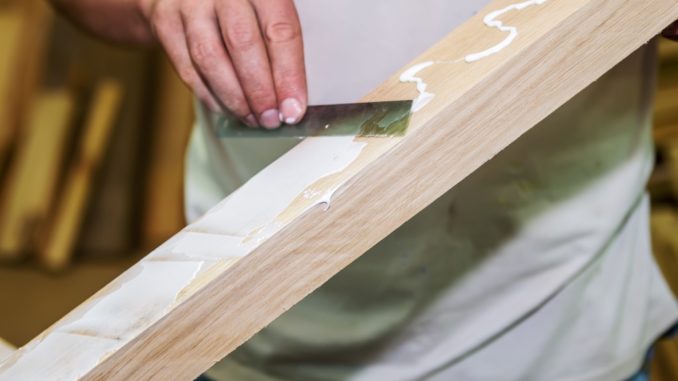
You use wood glue for holding pieces of wood together, as it is a durable adhesive sealant. The advantages you’ll gain from this product will be highlighted below. It’s important to know that you’ll have the utmost convenience to finish your project when you buy wood glue from an online seller.
When You Need Wood Glue
- Broken wooden furniture: Most households use wood glue to fix broken furniture. With just small amounts, it can help you put broken pieces of wood objects in place to make the item functional again. Interestingly, the solution solidifies, so your furniture will look good again after removing excess patches or blobs.
- Securing wood products: Carpenters and construction professionals frequently rely on wood glue to ensure pieces of wood are intact together permanently before putting large screws or bolts. The adhesive is for additional support.
- Decorating purposes: Skirting boards and frames at home bring exquisiteness and value to your property. When they are broken, you can fix them by applying wood glue along the back to attach them. The adhesive is also handy in fixing wooden tiles.
- Crafts: There are lots of amazing wooden sculptures around the world that continue to impress increasing numbers of people, and wood glue is a sculptor’s best friend. A strong adhesive makes large wooden objects structurally efficient and sturdy.
Wood Glue Types
There are five types of wood glue that you can find on the market, such as the following:
- Polyvinyl acetate adhesive is the most natural type of glue on the market. It has a water resistance feature. Many people use it, but others dislike the glue because excess dried bits of PVA adhesive can interfere with the finish.
- Hide adhesive comes from animal hides. It’s widely used for several purposes. Despite its property of having higher tensile strength than PVA glues, the hide adhesive is not waterproof. But it can resist water when you add 0.5 to 1% aluminum sulfate.
- Epoxy is a two-part kind of adhesive — a resin and a hardener. Once you combine the two liquid components, a chemical reaction happens that leads to drying of the mix. It takes longer to cure compared with other glues, but this is one of the best adhesives to bond wood pieces together.
- Cyanoacrylate glue: Typically known as CA glue, this adhesive cures quickly and some people use an accelerant to speed up the process even more. The CA adhesive is for temporary use to bond two curved pieces of wooden objects.
- Polyurethane adhesive is a tough kind of resin, which is waterproof. It swells while undergoing the drying stage. Be careful not to let this solvent reach your skin, as it’s really difficult to remove.
How to Remove Wood Glue from Your Skin

Usually, if your skin acquires solvent, you would wash it thoroughly with soap and water. Interestingly, wood glues wear off from the skin after a couple of days. But what would you do if you feel discomfort and the dried solvent’s still stuck on your skin? To get it off your skin, you can consider the following:
- Polyurethane glue removal: Using lacquer thinner can help you get rid of the solvent. Be patient in removing the glue. Wait until your skin releases natural oil to remove the solution entirely.
- Latex-based glue removal: For latex-based wood glue, what you can do to eradicate the solvent is apply acetone on the affected area. Another way is to buy a MET (methyl ethyl ketone). It’s available in stores that sell paint products.
